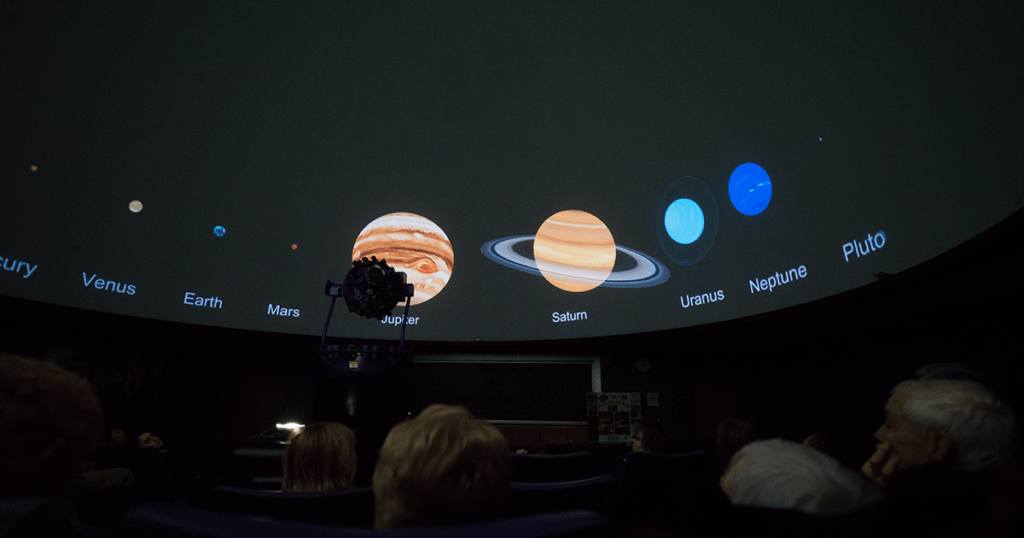DIGITAL PROJECTOR
In order to overcome some of its drawbacks, a growing number of planetariums are replacing the complete network of connected projectors used traditionally around a star ball with digital technology. Manufacturers of digital planetariums assert that these systems are more reliable and require less maintenance than traditional “star balls” since they have fewer moving components and typically do not need to be coordinated across the dome by many systems. On the same dome, several planetariums combine both conventional optomechanical projection and digital technologies.
The way that all digital projection systems function is by generating a vast array of pixels to represent the night sky. In general, the viewing experience improves when a machine can display more pixels. High-end systems now offer a resolution that approaches the threshold of human visual acuity, in contrast to the first generation of digital projectors’ inability to produce enough pixels to equal the image quality of the greatest conventional “star ball” projectors.
 The usage of LCD projectors in planetaria has tended to be constrained because of the inherent limitations on both their capacity to project true darkness and light. The contrast ratios of LCOS and modified LCOS projectors have surpassed those of LCD while also doing away with the “screen door” effect caused by tiny gaps between LCD pixels. “Dark chip” DLP projectors enhance the normal DLP design and can provide a reasonable cost-effective solution with bright images, but the projectors must physically be baffled to get the necessary black level. With its bright visuals, high dynamic range, and broad colour gamut, laser projection has promise as the technology develops and becomes more affordable.
The usage of LCD projectors in planetaria has tended to be constrained because of the inherent limitations on both their capacity to project true darkness and light. The contrast ratios of LCOS and modified LCOS projectors have surpassed those of LCD while also doing away with the “screen door” effect caused by tiny gaps between LCD pixels. “Dark chip” DLP projectors enhance the normal DLP design and can provide a reasonable cost-effective solution with bright images, but the projectors must physically be baffled to get the necessary black level. With its bright visuals, high dynamic range, and broad colour gamut, laser projection has promise as the technology develops and becomes more affordable.
